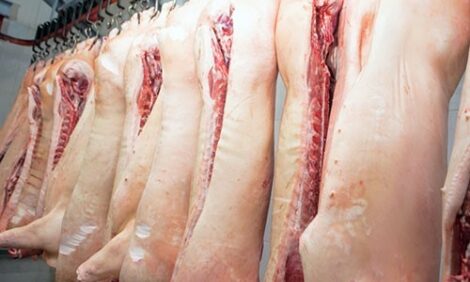



‘Coopetition’ healthy for pork industry
Teaming up to share ideas and troubleshoot swine-health issues can be good for pork producers and the industry, said Joel Nerem, DVM, a swine veterinarian with Pipestone Veterinary Services, Pipestone, Minnesota.This form of collaboration is known as “coopetition.” Although the word itself may be new to the pork industry, veterinarians, producers and others have long practiced it, said Nerem, who moderated a panel discussion on the topic at the 2017 Allen D. Leman Swine Conference.
He cited the Morrison Swine Health Monitoring Program (formerly the Swine Health Monitoring Project) created by the late Bob Morrison, DVM, University of Minnesota, as an example of how this kind of collaboration can benefit pork producers. Over the years, the program has enlisted the participation of many of the nation’s largest pig producers to cooperate in sharing health-status information, especially on the porcine reproductive and respiratory syndrome (PRRS) virus in breeding herds.
Today nearly 1,000 sow farms from more than two dozen companies are enrolled in this project. Each week the companies share the health status of these farms. This helps them track new infection rates of PRRS, Nerem said. He called it a good first step in trying to understand the epidemiology of PRRS in sow farms.
Another good example of coopetition is the Pipestone System, which has allowed pork producers to pool their resources on breeding and farrowing while maintaining their independent grower-finisher operations, Nerem said. Similar programs have emerged elsewhere in the pork industry.
“I think one of the keys with coopetition is that we find it easier to cooperate with competitors when we are all looking at getting the same return from it. If your farm has bad health and my farm has good health, you’re putting me at risk,” he said. “So, it’s in my best interests to help you get better whether it’s related to biosecurity or improving your [herd] health. We all have a vested interest in improving the health of all of our farms because the worst health is a risk to everyone.”
Nerem said this shared interest extends to other areas, including communicating with consumers, strengthening public perception and research. Coopetition can be helpful in telling the story of pork and the pork industry to consumers, he said.
“It’s all in our best interests to keep pork as a product of choice, as something that is desirable to our society,” he said. “We need to make sure we are working together to communicate and promote our product as safe and wholesome and [demonstrating] the things we are doing on our farms are sustainable and in the best interests of our farms and our society.”
He added that coopetition can also strengthen the knowledge base for producers and others in the industry. For example, he cited a session at the Leman conference where representatives from two competing companies presented the outcome of tests they’d conducted separately on weaning ages in baby pigs and subsequent performance.
“That kind of collaboration and sharing is good for the industry,” he said. “It’s good for all producers and helps us build that knowledge base we can work off of together.”









